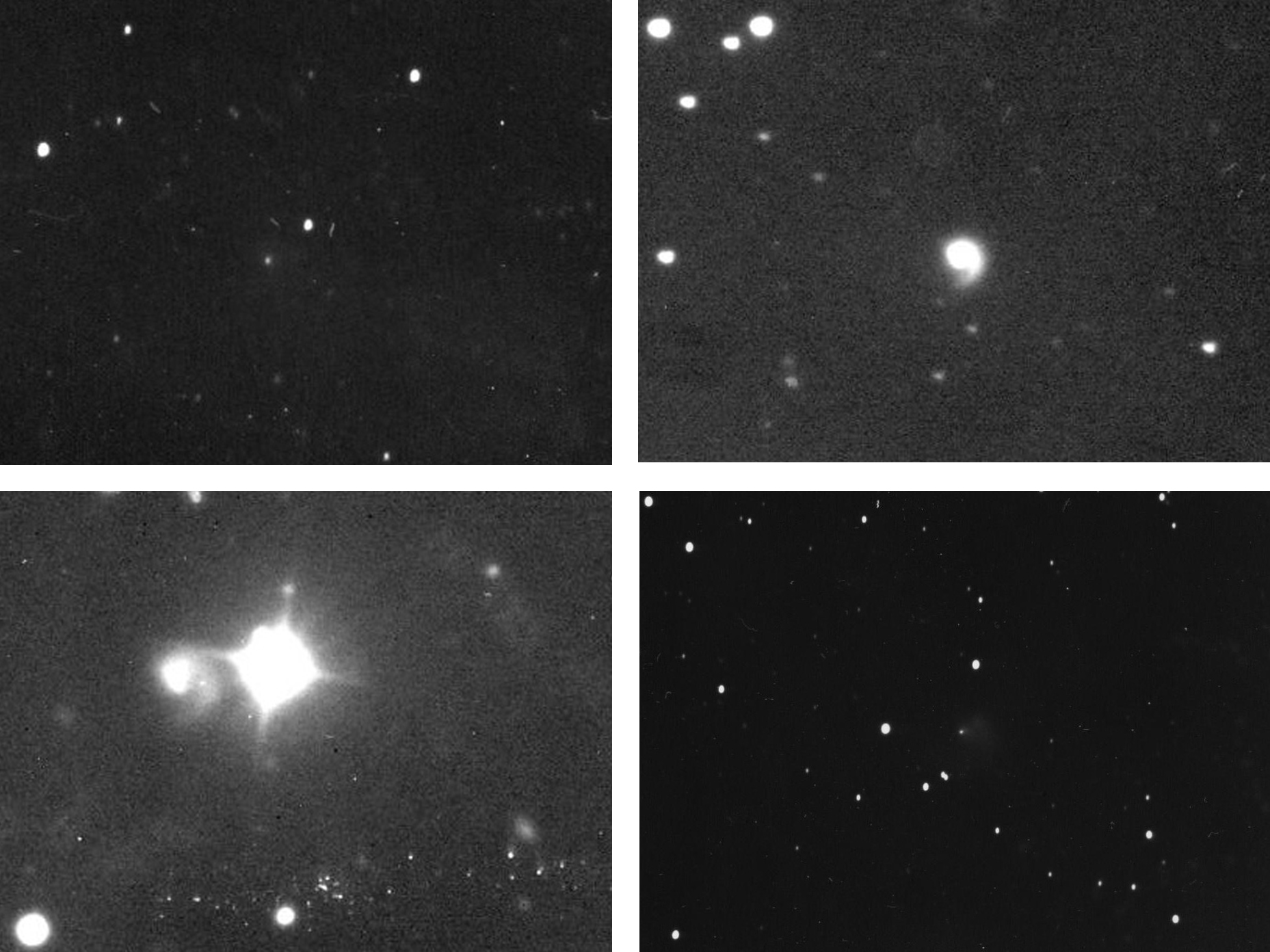
Perihelion: 1925 May 7.84, q = 5.475 AU
One of the most unusual and remarkable comets that we know about was discovered just a little less than a century ago, when on November 15, 1927, the duo of Arnold Schwassmann and Arno Wachmann at Hamburg Observatory in Bergedorf, Germany, found it on photographs as it was near opposition and traveling slowly through the constellation Pisces. It was about 13th magnitude at the time, but faded pretty quickly, to about 16th magnitude in December and to 17th magnitude when it disappeared into evening twilight the following February. The comet’s unusual nature began to become clear once orbital calculations revealed that it had passed through perihelion over 2½ years earlier at a heliocentric distance of 5.5 AU – a record perihelion distance at the time – and moreover was traveling in a near-circular orbit (eccentricity 0.15) entirely between the orbits of Jupiter and Saturn with an orbital period of 16.4 years. What has really made this comet so remarkable is that it was soon found to be undergoing outbursts, sometimes of several magnitudes, at irregular and unpredictable intervals, and several such events were recorded over the next few years, including around the time the comet was at aphelion in 1933.
In 1931 Karl Reinmuth at Heidelberg Observatory in Germany found images of a 12th-magnitude comet on photographs taken on two nights in March 1902, which was soon identified as being Comet 29P during another outburst. Meanwhile, the comet has been under almost continuous observation ever since its discovery, except for the times when it is near conjunction with the sun and thus is unobservable. An extended encounter with Jupiter during the late 1970s acted to further circularize its orbit by increasing the perihelion distance to its present value of 5.8 AU, decreasing the eccentricity to 0.04, and shortening the orbital period to slightly under 15 years. The comet was most recently at perihelion on March 7, 2019, and will be at aphelion in September 2026. It was at opposition earlier this month and last underwent one of its outbursts in late July, when it became slightly brighter than 13th magnitude.
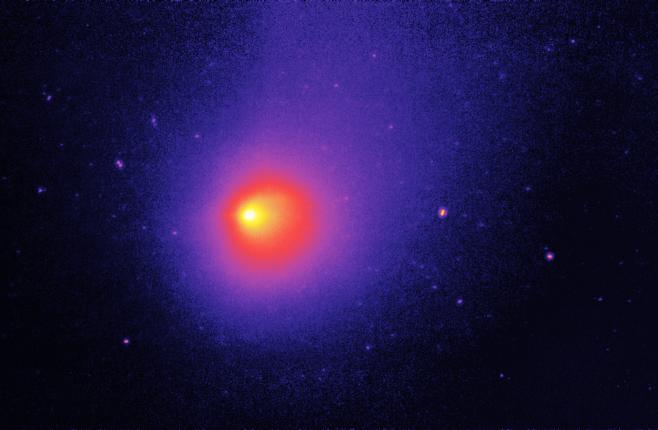
When it is quiescent Comet 29P is usually around 16th or 17th magnitude and exhibiting a small, faint coma. The outbursts occur on the average of perhaps two or three times a year, but this can vary; sometimes several outbursts may occur over a period of a few months, and on rare occasions, the comet has gone two or three years without one. During an outburst, the comet will normally reach 12th or 13th magnitude, but on a few occasions has become brighter, to 11th or even 10th magnitude, and once – in early 1946 – it almost reached 9th magnitude. Many astronomers monitor the comet on a regular basis to watch for outbursts; I began doing this myself in early 1981, saw my first outburst three months later, and as of now, I have seen several dozen of them.
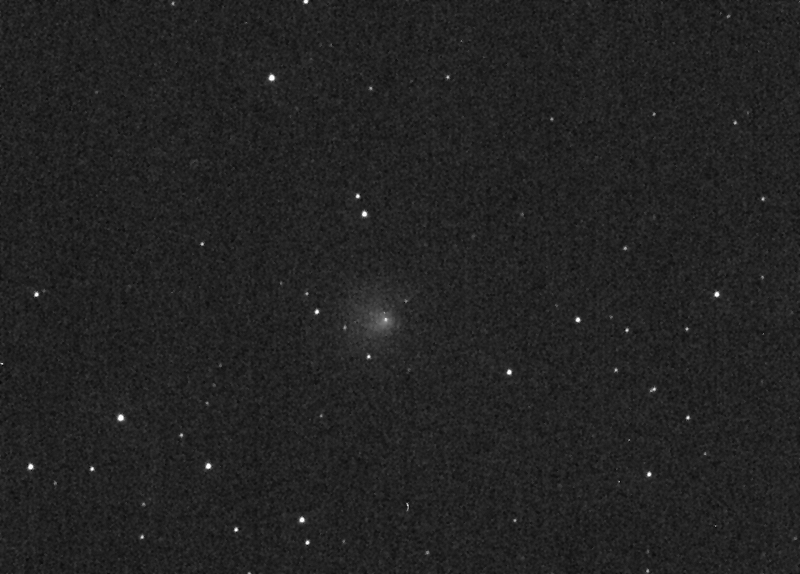
Although the specific sequence of events may vary somewhat from one outburst to another, these typically begin with the appearance of a bright, near-stellar condensation near the center of its regular small coma. Over the course of a few hours this condensation expands and takes on the appearance of a bright disk, which over the next few days will expand outwards and start to become more diffuse; at times this may take on a spiral-shaped structure. After a couple of weeks this resulting outer coma will be quite spread out and diffuse, and before much longer it disperses into space, leaving the comet once again in a quiet state. Every once in a while a new outburst may begin before the original one has subsided, keeping the comet at a fairly bright level for two or three months or more.
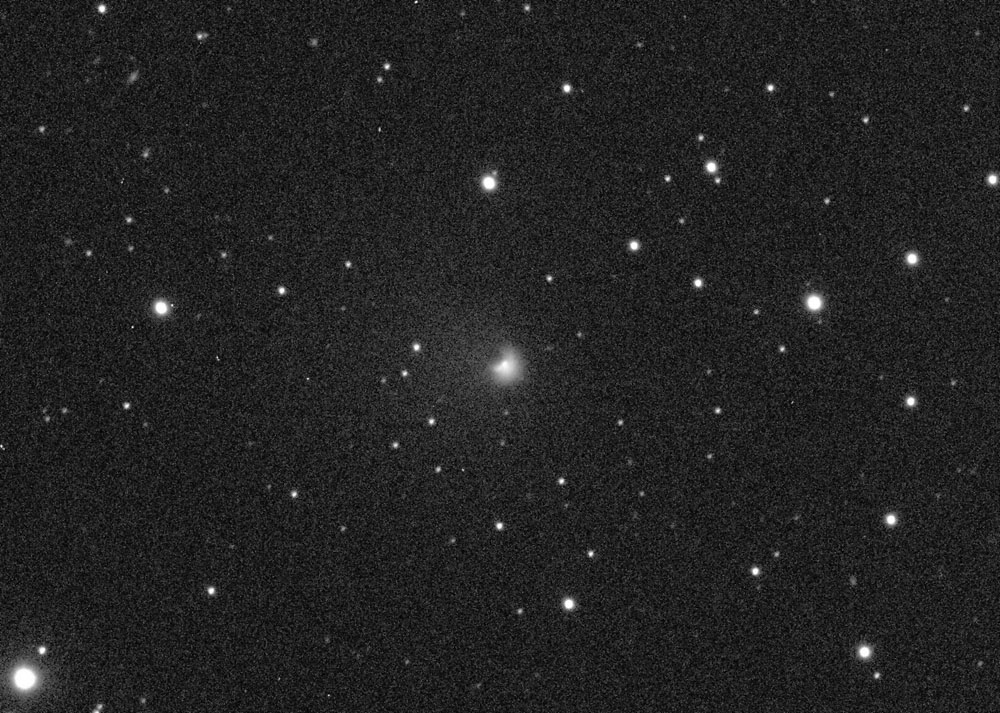
The specific cause of these outbursts has remained a mystery ever since the comet was discovered, as there has been no real correlation between their occurrences and phenomena like solar activity, or with the comet’s location in his orbit. In 1990 American astronomer David Jewitt proposed that the outbursts may be due to phase changes in “amorphous ice” in the nucleus that is occasionally exposed to sunlight, with the comet’s remaining at just the right heliocentric distance for this to occur. More recently, British astronomer Richard Miles has provided evidence that the nucleus – which is apparently quite large, perhaps as large as 60 to 70 km in diameter – rotates very slowly (with a rotation period of 58 days), and that the comet’s coma is produced via sudden and brief eruptions on its surface. A continuous monitoring campaign that he has organized has been detecting about 20 such “mini-outbursts” (of approximately half a magnitude) per year, with much of this material falling back onto the nucleus creating a crust that in turn allows pressure to build up underneath and form “cryomagma.” The larger and more conventional outbursts then arise from eruptions of “cryovolcanoes” on the surface.
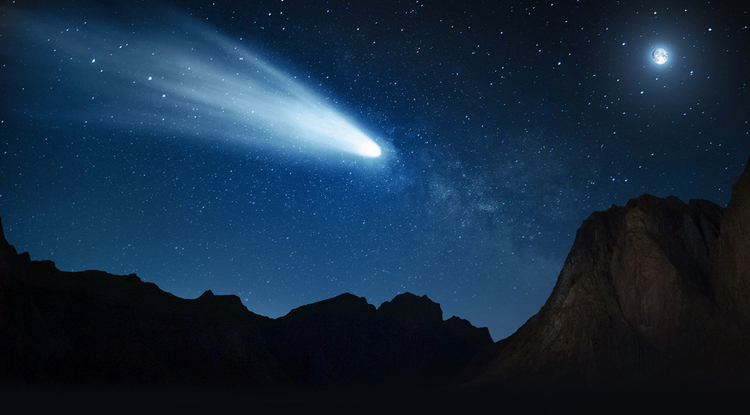
In the late 2030s, Comet 29P will again undergo an extended encounter with Jupiter, which will increase its perihelion distance further to 5.9 AU, its eccentricity to 0.07, and its orbital period to 15.9 years. Over longer timescales, its orbit is chaotic (in a mathematical sense), and at some point in the future – perhaps a few thousand years from now – Jupiter will either perturb it into a smaller, shorter-period orbit in the inner solar system or else place it into a hyperbolic orbit and eject it from the solar system altogether. Indeed, from a dynamical perspective, Comet 29P’s orbital evolution is similar to that of centaurs – discussed in a previous “Special Topics” presentation – and by some definitions, it can actually be considered as such an object. A recent study by a team of astronomers led by Gal Sarid at the Florida Space Institute concludes that Comet 29P presently occupies what could be considered a “gateway” between the Kuiper Belt object-to-centaur progression and short-period Jupiter-family periodic comets. If in a few thousand years’ time, Comet 29P were to become such a periodic comet, it would likely be an amazingly spectacular object, that moreover returns every few years to brighten up the nighttime sky. It is thus possible that our descendants in a few millennia may be in for quite a show.
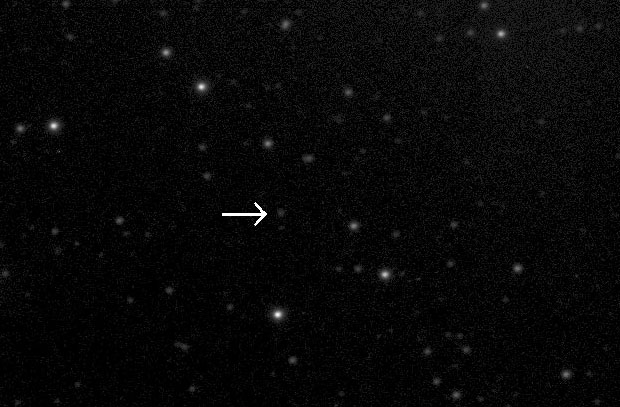
Curiously, just this past June the Pan-STARRS program in Hawaii discovered a faint object, designated 2020 MK4, that is traveling in a near-circular orbit strikingly similar to that of Comet 29P. Its physical nature is still somewhat unknown, but the fact that it has not been detected on images taken before this year, and some data that appears to show some weak activity, suggests that it could be a comet similar to, albeit quite a bit smaller than, Comet 29P, that possibly has recently become active and that conceivably could also be in a “gateway” status. Meanwhile, two spacecraft missions, dubbed Centaurus and Chimera, have been proposed for missions to Comet 29P, although neither of these has been selected for further development at this time.
SPECIAL ADDENDUM
It is most appropriate that this comet should undergo a new outburst during the very week that it is the “Ice and Stone 2020” “Comet of the Week.” The new outburst took place on November 19 and was first independently detected by amateur astronomers Jean-Francois Soulier in France and Nick James in England, both of whom are collaborating with Richard Miles in the observing campaign mentioned above. After reading of their reports, I successfully observed the comet visually about 16 hours later, and it appeared as a small condensed object near magnitude 13½. British amateur astronomer Martin Mobberley has posted an image of the comet he took about three hours before my observation that illustrates this basic appearance.
If this outburst follows the pattern that most outbursts follow, this small and condensed inner coma will expand out and grow progressively more diffuse over the next two to three weeks. The comet should remain visually detectable near the same brightness for about that same length of time before fading out – unless, of course, new outbursts occur, which are always possible.
More from Week 47:
This Week in History Special Topic Free PDF Download Glossary
Ice and Stone 2020 Home Page


